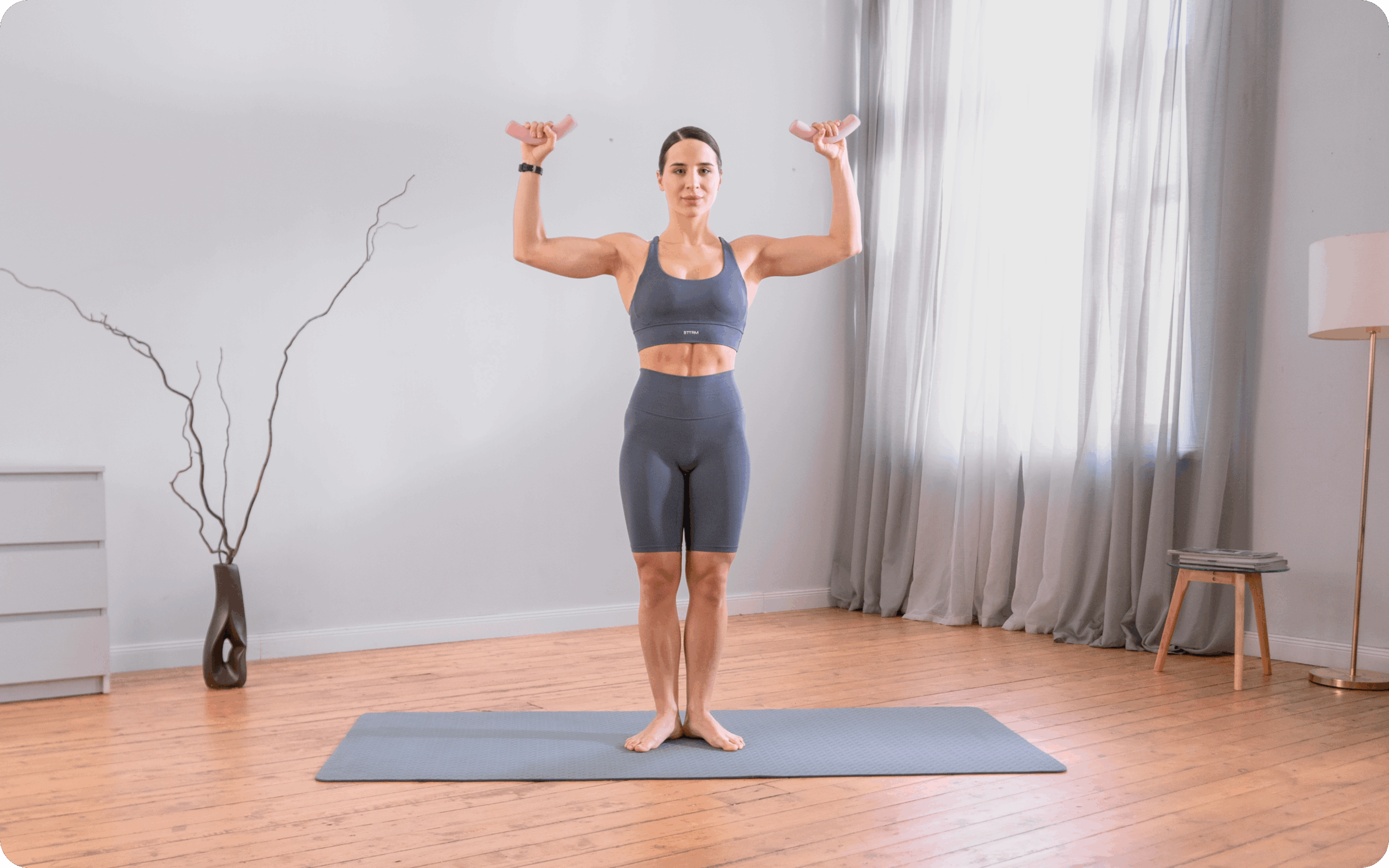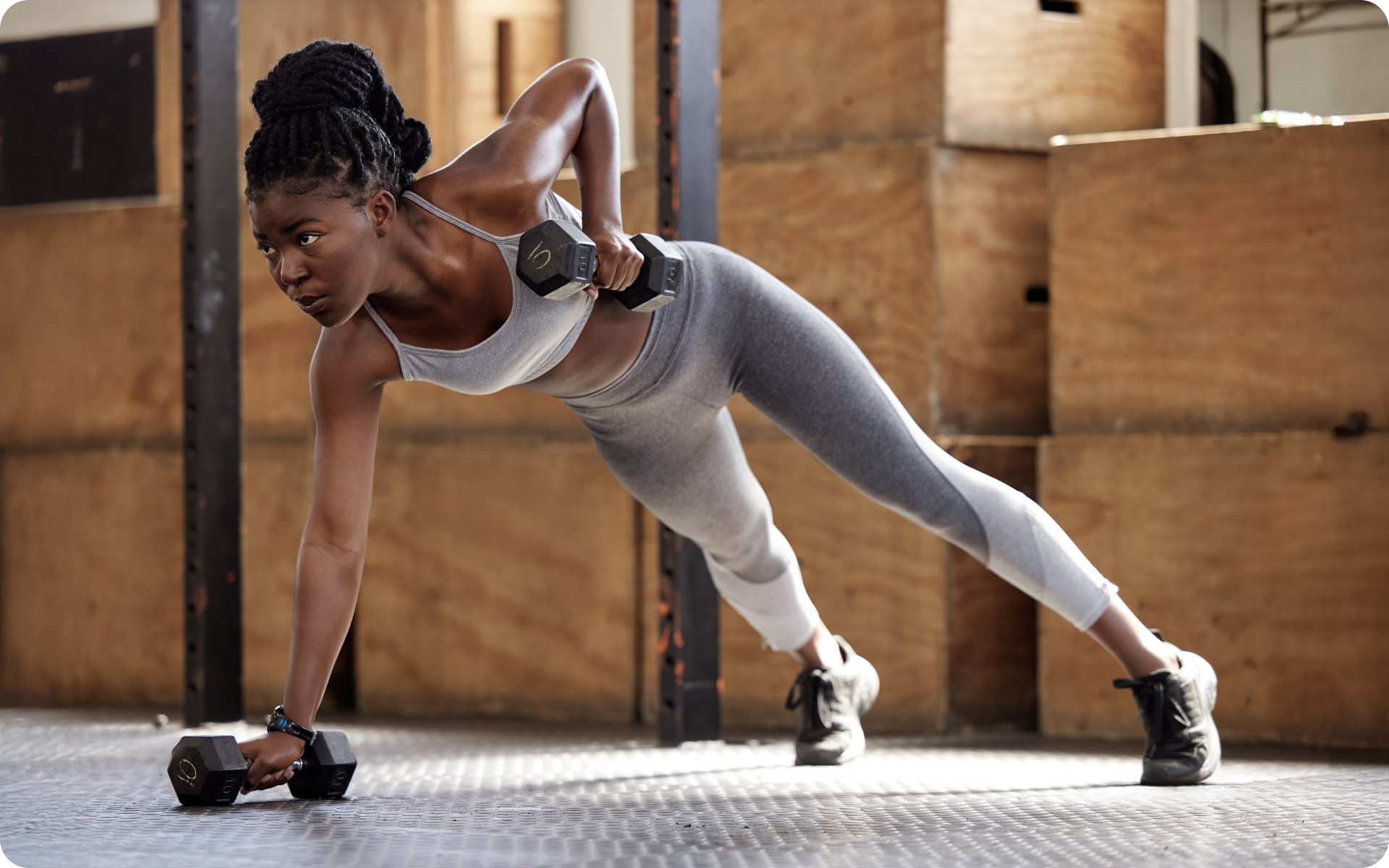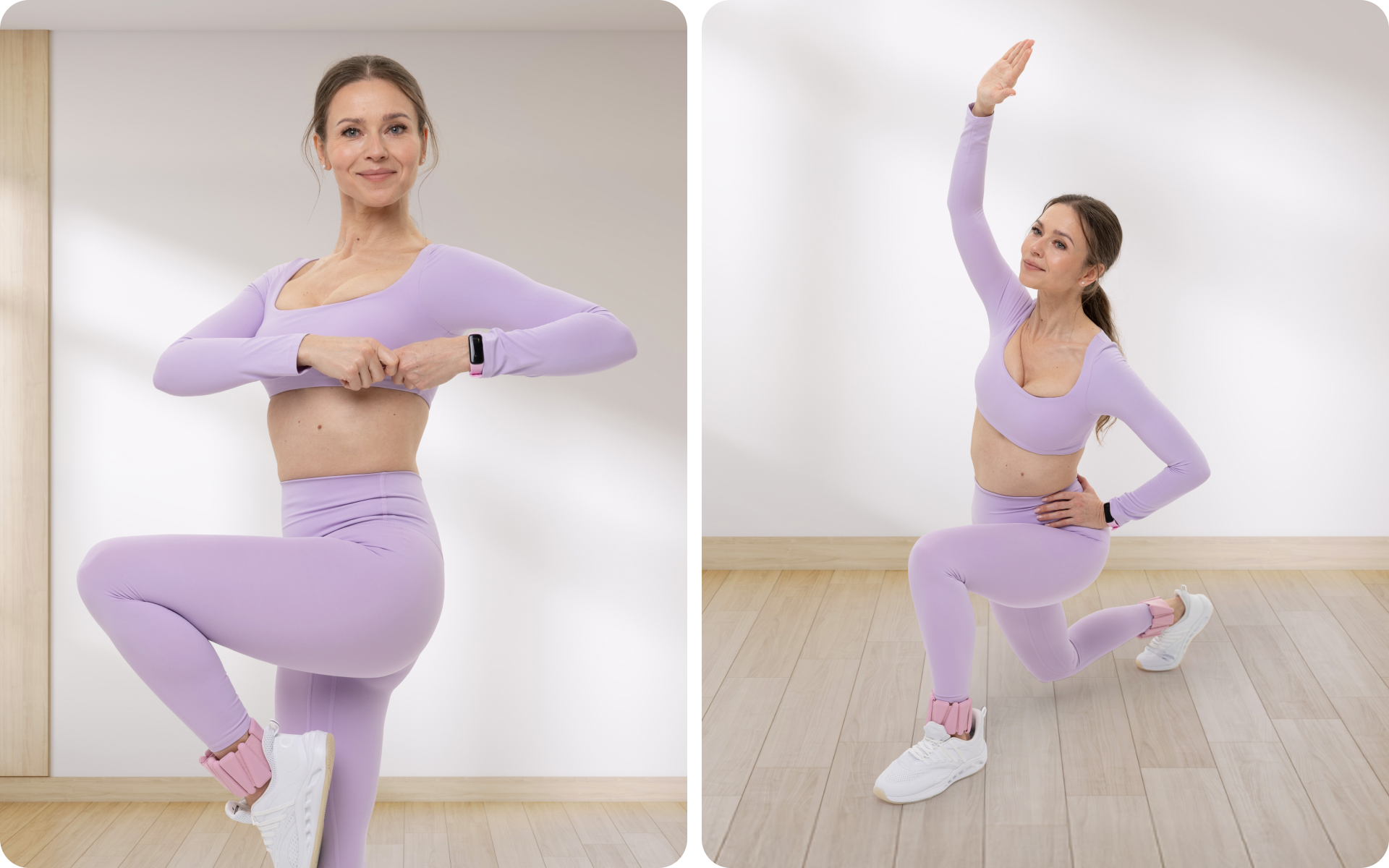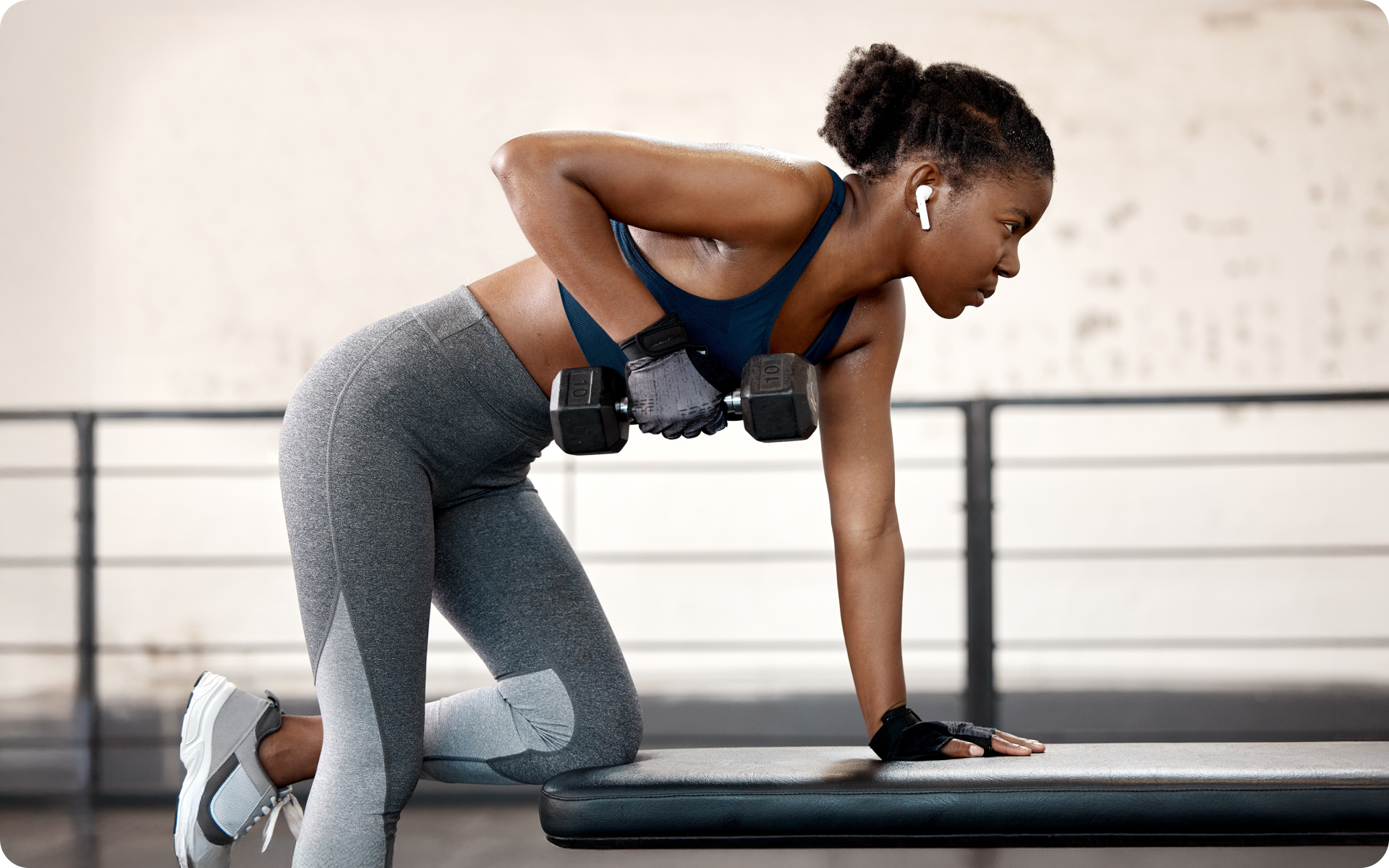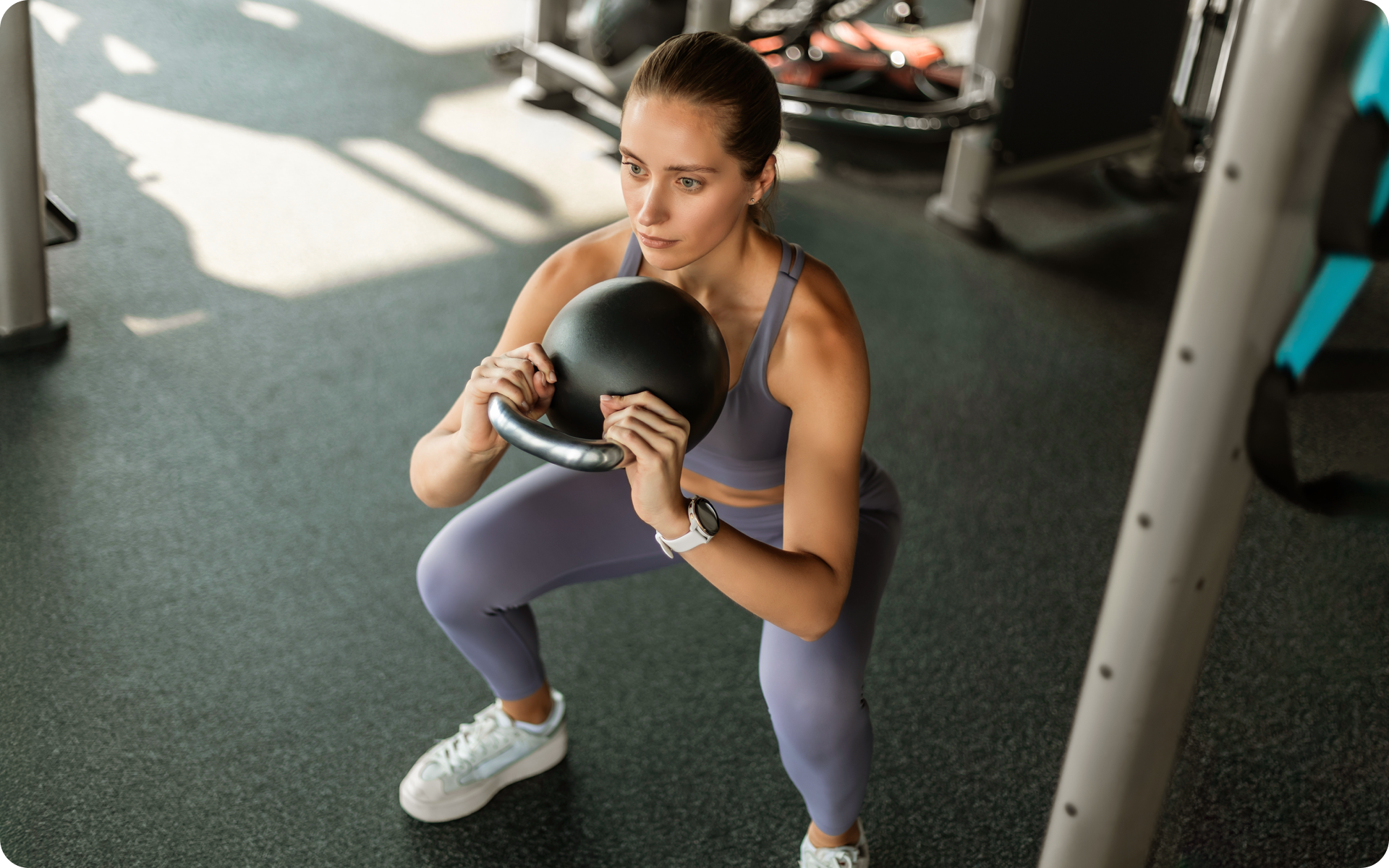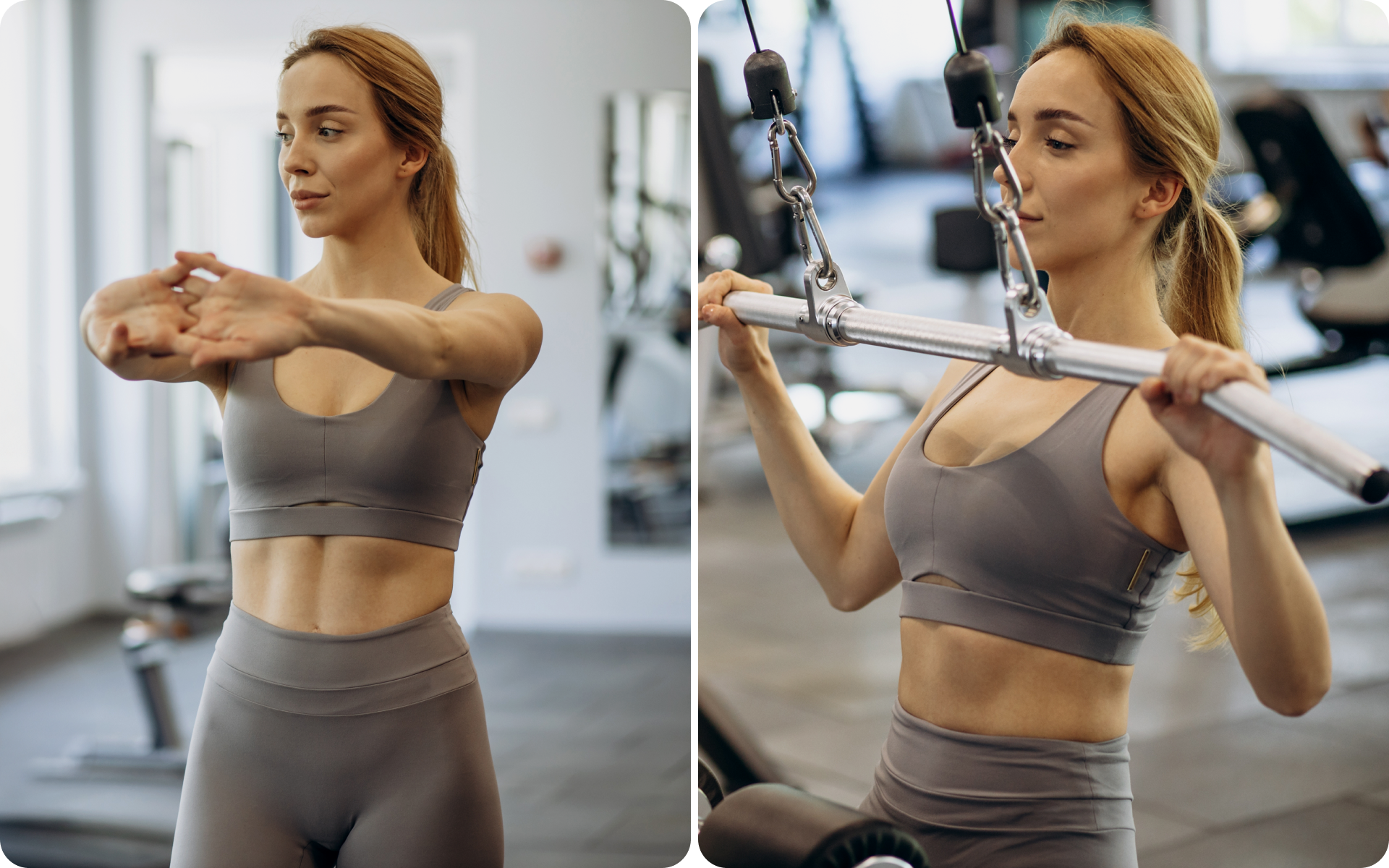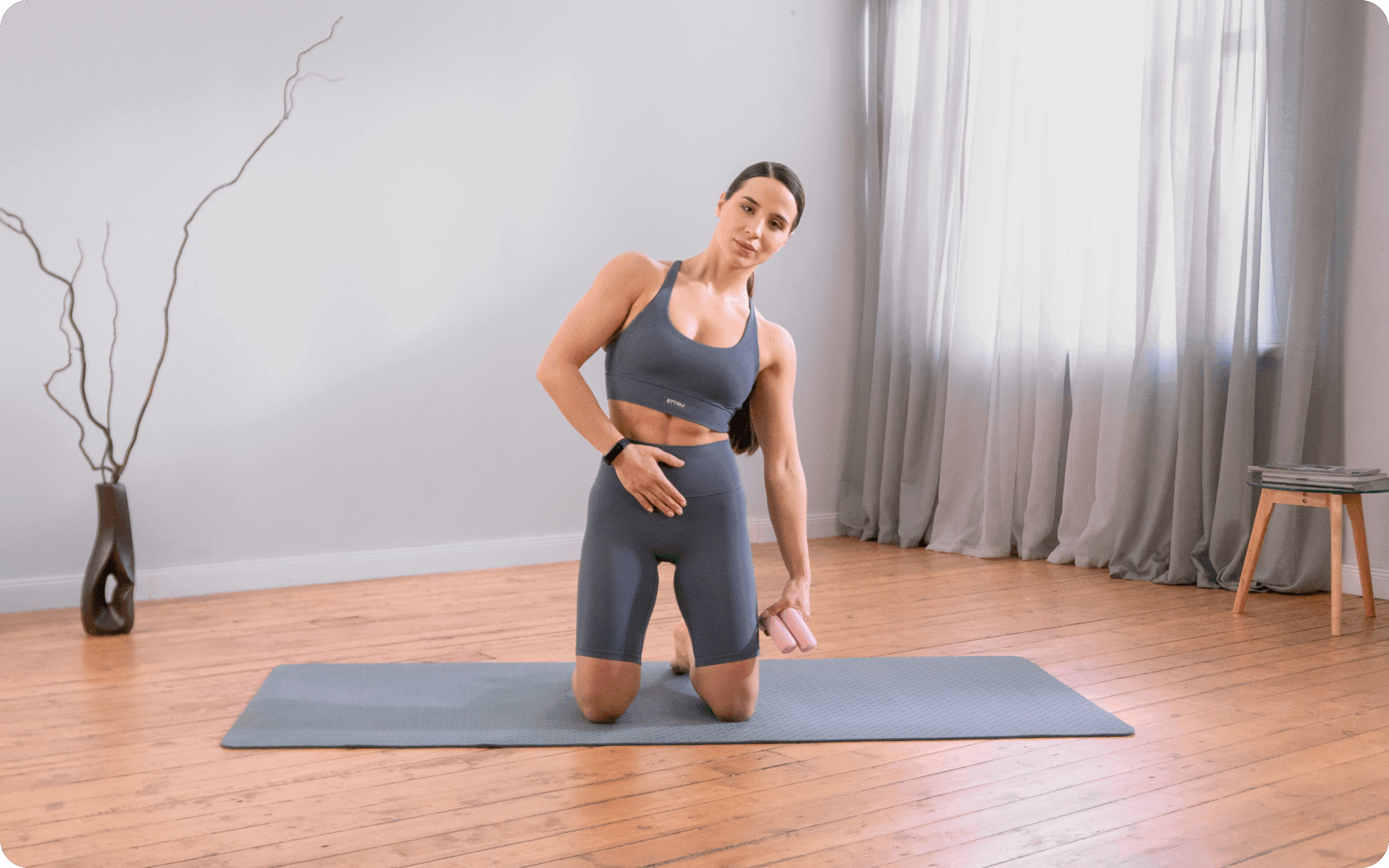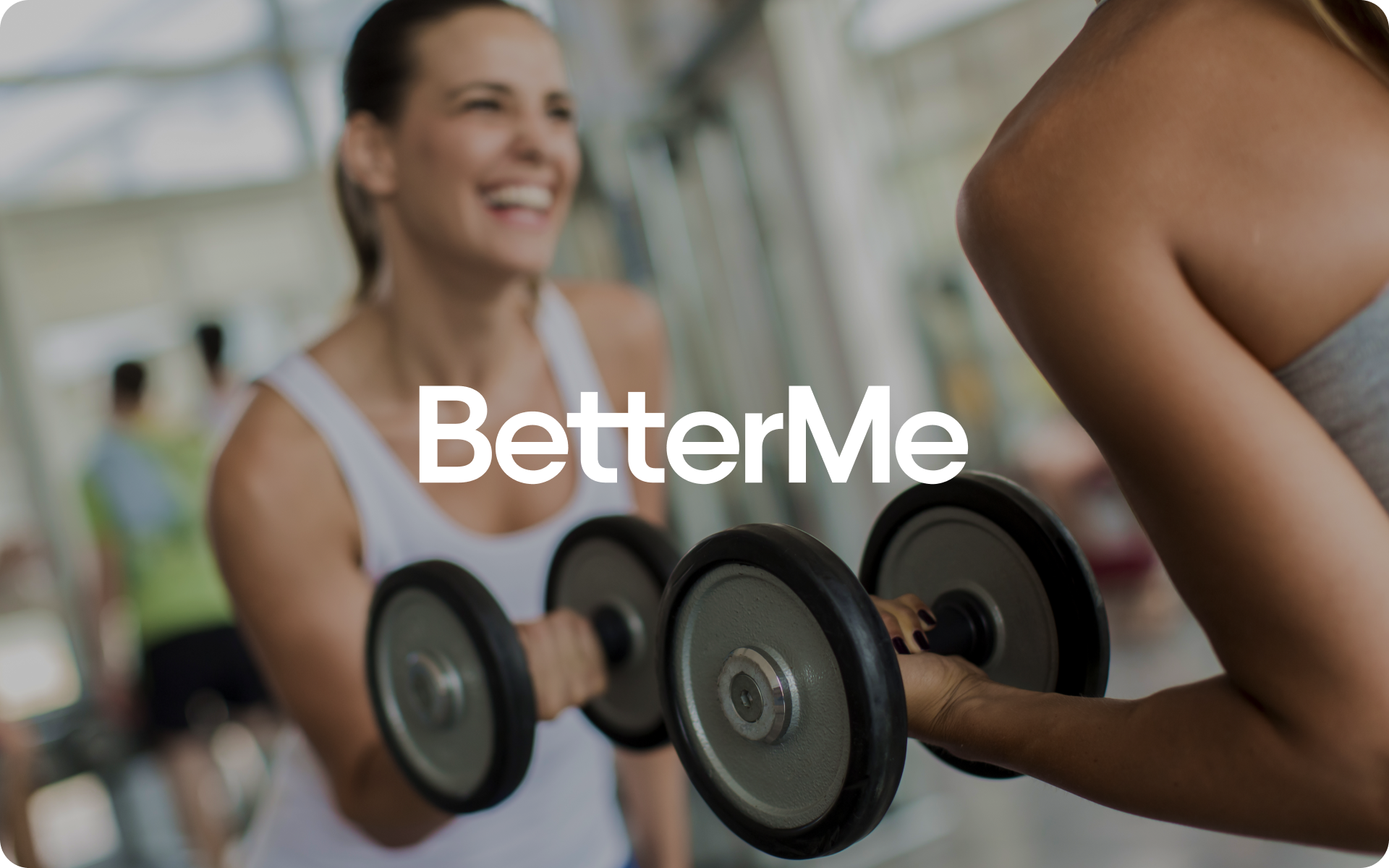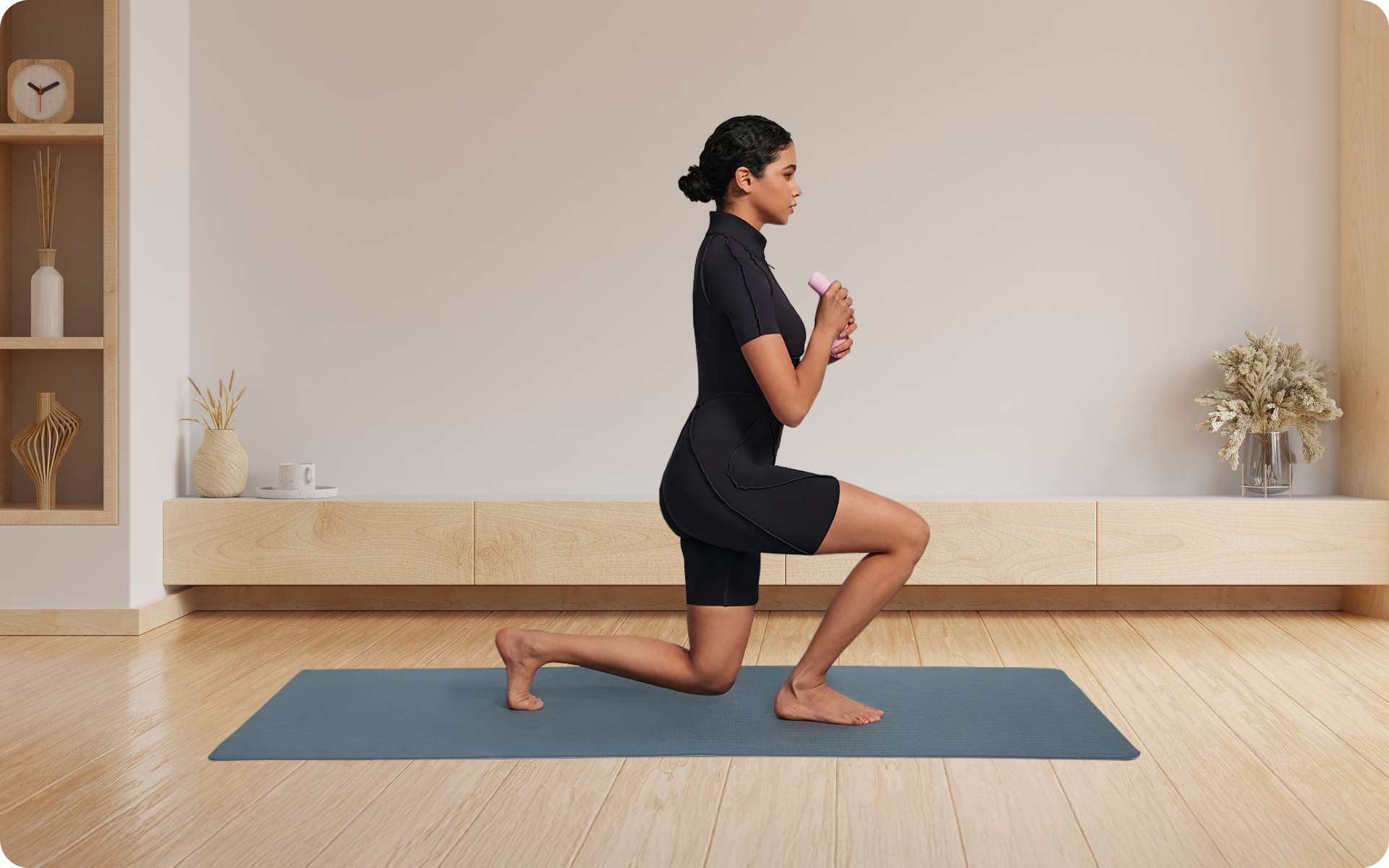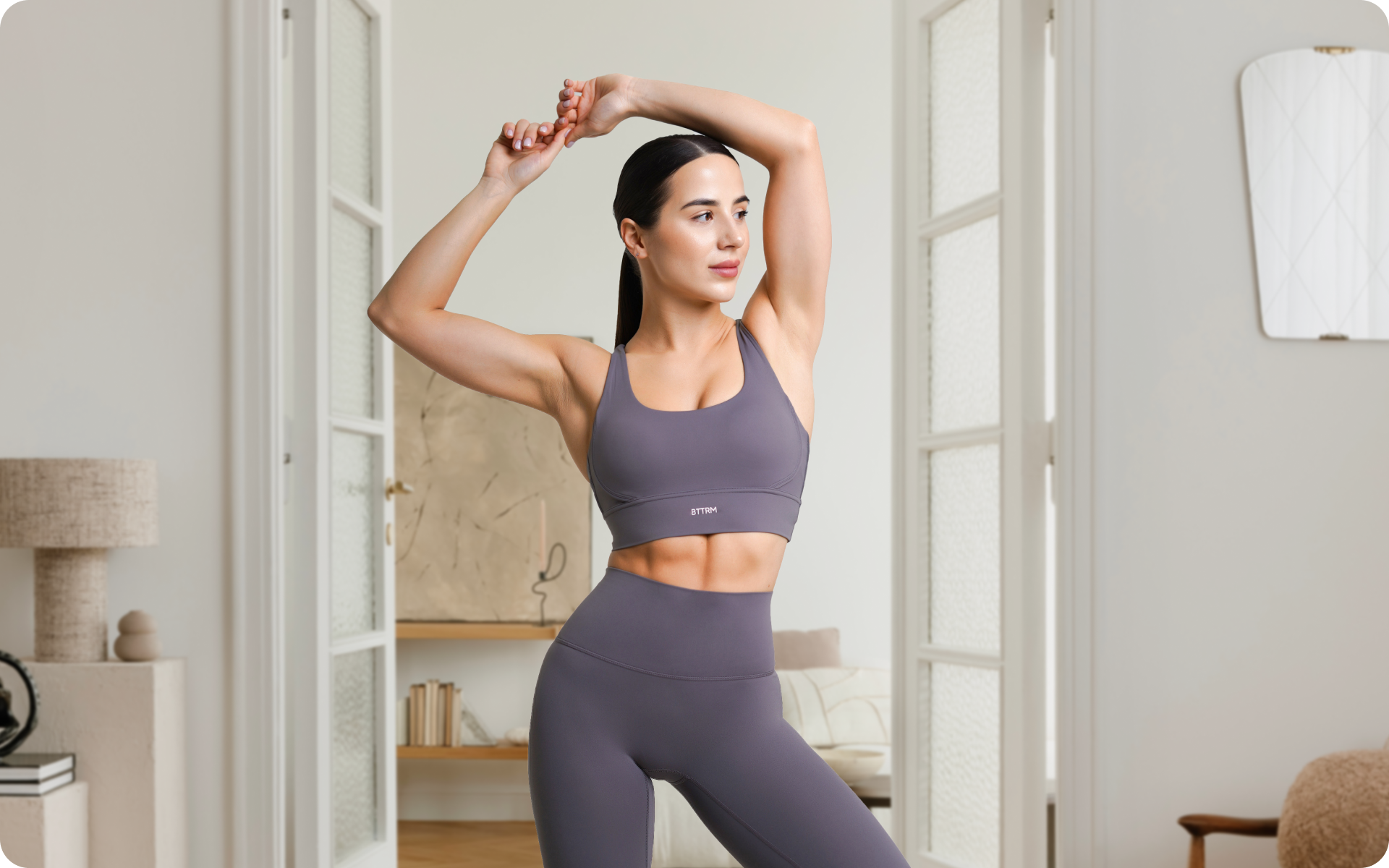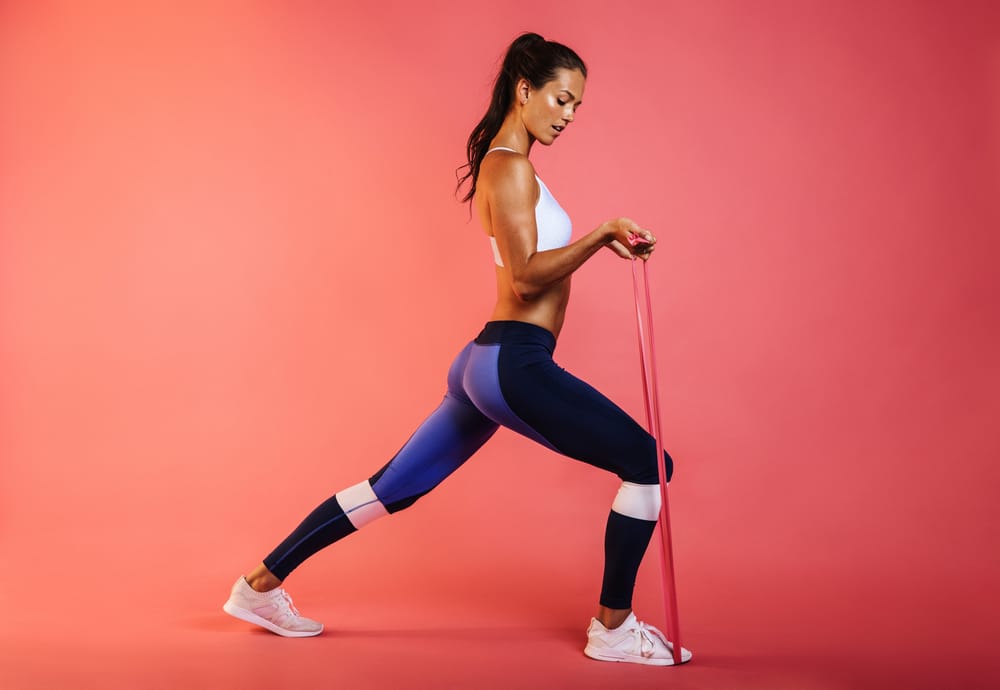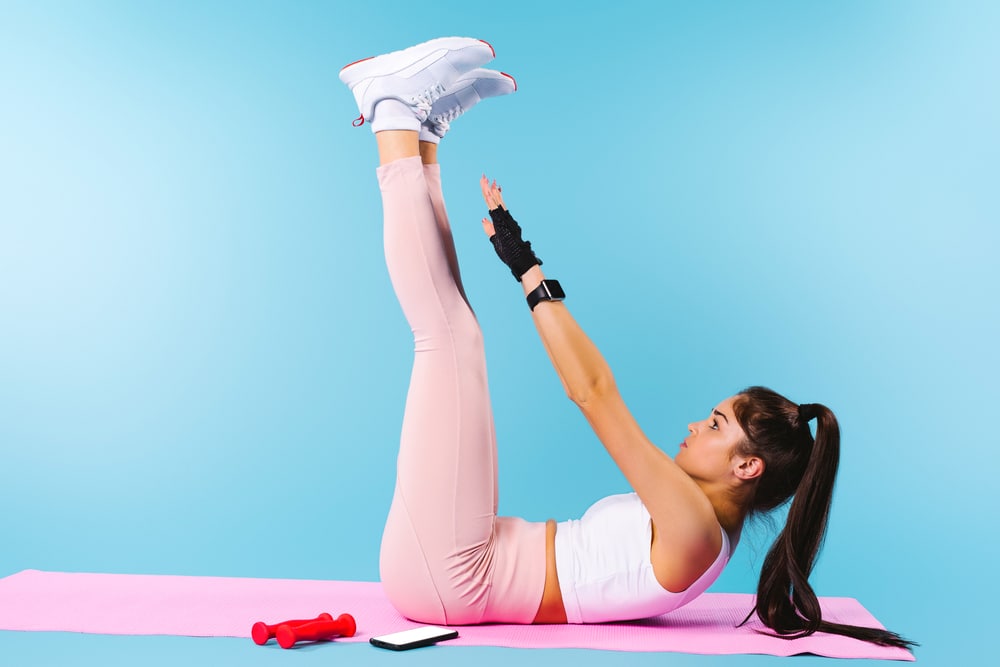The beauty of strength training is that there are several ways of going about it. All you need is a bit of creativity, and it doesn’t matter too much if you’re an advanced or novice trainee. You’ll get the work done. The bonus? You get to build muscle mass and lose weight simultaneously.
The 5-day dumbbell workout split is arguably one of the most effective strength training strategies for building muscles. Sure, it’ll take a lot of commitment and dedication, but the results will be worth it.
Here’s everything you need to know about this workout plan.
Is a Daily Dumbbell Workout Plan Good for You?
Let’s say you’re looking for a 5-day workout plan that both women and men can do, but you don’t quite understand how to get started on one. A good place to start could be with a workout plan that is designed to be used with dumbbells. To help you understand why the 5-day dumbbell workout routine is effective, we must first look at some of the basics.
You see, split workouts are different from full-body workouts as they target specific muscle groups at a time (1). It then follows a 5-day split routine that targets specific muscle groups five days a week. You then get two days to rest, then repeat the cycle for a set period, such as 6-12 weeks.
This kind of schedule is what makes these routines excellent choices for building muscle mass. So, is a daily workout plan good for you? Well, it all comes down to your fitness goals and your level of conditioning. Either way, you should make sure you get enough time for muscle recovery and don’t overtrain.
Now, all that’s left is to find the perfect strength exercises, and you’ll be ripped in no time. This is where the dumbbell workout plans come in.
Below are some of the benefits of dumbbell strength exercises:
Identifying and Correcting Strength Imbalances
Working out using dumbbells is a great way to isolate specific muscle groups. This could mean completing 10 reps with your right arm first and then switching over to your left arm for the next 10 reps. This kind of sequence can be particularly useful for identifying and correcting any strength imbalances on either side. How? You can mirror one arm and then switch to the other. For example, if you can complete 10 reps of dumbbell curls with your right arm but can only do 8 with your left arm, this indicates a muscle imbalance. You’ll want to work toward getting your left arm stronger in order for both arms to have equal strength. Ideally, you’ll want to start with the weaker arm and try to complete as many reps as you can. Once you’ve reached your limit, switch to the stronger arm and complete the exact same number. It will likely be easier for the stronger arm to complete the reps, but this is how you develop equal strength for both arms.
Dumbbells Promote Muscle Growth
Using dumbbells creates two types of overloads, metabolic and mechanical. The latter is caused by the damage brought about by muscular contractions during the workout. This triggers a repair process that ultimately increases the size and strength of your muscles.
Metabolic overload happens when your muscles are worked to fatigue. As a result, your muscles start to store more glycogen as an adaptation mechanism, which results in large muscles (2).
Heavier dumbbells will stimulate mechanical overload. However, moderate-weight dumbbells combined with high reps to fatigue can result in metabolic overload.
Improved Joint Mobility and Muscle Activation
Strength training routines that involve dumbbells usually require a greater range of motion compared to using barbells. Essentially, this will require greater stabilization, thereby activating more muscle fibers. This will then create a domino of improved increased joint mobility (3).
Improved Muscular Coordination
When you’re using dumbbells, you have two weights that you need to control, which can significantly improve your coordination. Here’s how that happens. Firstly, there are two types of muscular coordination in your body, intra and intermuscular.
Intermuscular coordination is when different muscles work together to stabilize and produce joint motion. However, intramuscular coordination is the number of muscle fibers connected to motor units that are activated within a specific muscle (4).
When you use light dumbbells in compound or multiplanar movement patterns, you improve your intermuscular coordination. Heavier dumbbells, on the other hand, increase the amount of muscle fiber activation with specific muscles.
Finally, dumbbells are also considered by most trainees to be more joint-friendly. For example, dumbbells may relieve shoulder pains that are sometimes caused by barbells (5).
Dumbbells Can Be Scaled for All Fitness Levels
Unlike barbells, dumbbells are more flexible for use by trainees of all fitness levels. It doesn’t matter whether you’re an expert or a beginner. The key lies in picking weights that challenge you and allow you to move efficiently and safely (5).
Dumbbells Are Often Affordable, Easily Accessible, and Space Saving
Perhaps one of the best perks of dumbbells is their cost. Depending on the weights you start with, a pair can cost about $40-$110. Dumbbells are also incredibly convenient and easy to use at home. This is because they require very little space for storage and use, unlike barbells.
Finally, dumbbells are probably the most accessible strength training equipment out there. You can find them in most hotel gyms, so it doesn’t matter where you go – chances are you’ll always find dumbbells.
When it comes to safety, dumbbells may be the preferred alternative, particularly during pressing exercises. A failed bench press could result in severe injuries if the barbell crashes on your chest or neck.
However, if you’re using dumbbells, all you need to do is drop the weights on the floor. Therefore if you prefer to train solo, dumbbells should be your equipment of choice.
BetterMe: Health Coaching app helps you achieve your body goals with ease and efficiency by helping to choose proper meal plans and effective workouts. Start using our app and you will see good results in a short time.
The Best 5-Day Dumbbell Workout Routine
You’ve made your decision. You want to give the 5-day per week dumbbell workout routine a shot. The only question left is how to choose the best at-home workout program to build your lean muscle mass. You’re probably now wondering which 5-day workout plans with minimal equipment women and men can use at home.
Well, next, we’ll look at one of the best 5-day dumbbell workout routines and how you can go about it.
For more details about the 4-day dumbbell workout, take a look at our prior publication.
Warming Up
Jumping straight into workouts is never a good idea. Doing this can result in injuries that’ll ultimately interfere with your performance and push you further away from hitting your goals. In addition, the exercises in this program can get quite intense. If your body is unprepared, the first few rounds may be harder than they need to be, which will reduce your potential for strength and size gains.
Whenever warming up is brought up, we tend to think about jogging on the spot for a few minutes. While this may increase your heart rate, it won’t do much to prepare your muscles for what’s to come. Remember, this is a split-workout routine that targets specific muscle groups at a time. Your warm-up should be focused on the muscles you’re about to use.
You could start with a few dynamic stretches to activate your entire body. Next, move to more specific warm-ups that’ll target individual muscle groups. All this should take only a few minutes and then you’ll have a safer and potentially even better workout session. It’s worth it, right?
5-Day Dumbbell Workout Split
5-day splits can be done in several ways, with the most popular being training 1-2 muscle groups per workout. However, some people prefer to train each muscle group once weekly. Working on each muscle group twice per week seems to yield better results for most people.
The following workout plan involves an upper/lower-body split and push-pull-legs split. This ensures every muscle group is trained twice weekly for maximum muscle growth and better exercise variety.
Here’s how it’ll look:
Monday: Upper Body
On this day, the workouts will aim to train all the muscles in your upper body. For maximum impact, try to reach failure in each set. The majority of the upper-body muscles will be trained equally as the workout involves pushing and pulling. You should allow a recovery period of 60-90 seconds between each set.
Here’s what you’ll need to do:
- Dumbbell bench press: 5 sets and 8-10 reps
- Dumbbell tricep kickback: 4 sets and 8-12 reps
- Dumbbell row: 4 sets of 8-10 reps
- Dumbbell bicep curl: 4 sets and 8-10 reps
- Seated dumbbell shoulder press: 4 sets and 8-12 reps
- Dumbbell lateral raise: 3 sets and 8-10 reps
To learn more about the outer bicep workout, check out our in-depth article on the topic.
Tuesday: Lower Body
Your legs and core are essential for building a muscular, strong, and functional body. These dumbbell workout routines will help you do just that. For these workouts, the recovery period will be 60-90 seconds between sets.
Here’s what you’ll need to do:
- Dumbbell Romanian deadlift: 4 sets and 8-10 reps
- Dumbbell goblet squat: 4 sets and 8-10 reps
- Dumbbell frog squat: 3 sets and 8-12 reps
- Dumbbell rear lunge: 4 sets and 8-10 reps per leg
- Dumbbell leg extension: 5 sets and 8-10 reps
- Single-leg standing calf raise: 4 sets and 8-12 reps per leg
- Weighted crunch: 3 sets and 20 reps
Wednesday: Rest
Engage in active recovery or just rest to give your muscles time to recover.
Thursday: Push
The workouts on this day will primarily target your triceps, chest, and shoulder muscles. Due to the quantity of muscle-building volume in these exercises, you should expect some delayed onset muscle soreness (DOMS) on completion (6). You’ll need a recovery period of 60-90 seconds after each set.
Here’s what you’ll need to do:
- Dumbbell bench press: 5 sets and 8-10 reps
- Dumbbell flye: 4 sets and 8-10 reps
- Incline dumbbell bench press: 4 sets and 8-10 reps
- Lateral raise: 4 sets and 8-12 reps
- Dumbbell overhead triceps extension: 4 sets and 8-12 reps
- Dumbbell kickback: 4 sets and 8-10 reps per arm
Friday: Pull
The workouts on this day will primarily target your traps, back, and biceps. For these workouts, you’ll need a recovery period of 60-90 seconds after each set.
Here’s what you’ll need to do:
- Pull-ups: 3 sets and as many reps as possible
- Bent-over dumbbell row: 5 sets and 8-10 reps
- Dumbbell shrug: 4 sets and 8-12 reps
- Renegade row: 3 sets and 8-12 reps per arm
- Dumbbell preacher curl: 4 sets and 8-12 reps per arm
- Concentration curl: 3 sets and 8-12 reps per arm
Our previous post goes into great detail about the dumbbell arm workout.
Saturday: Legs And Abs
On this day, you’ll work on your leg muscles again, in addition to your abs. For these workouts, you’ll need a recovery of 60-90 seconds between sets.
Here’s what you’ll need to do:
- Dumbbell hip thrust: 4 sets and 10-15 reps
- Dumbbell sumo squat: 4 sets and 8-10 reps
- Bulgarian split squat: 5 sets and 8-12 reps per leg
- Single-leg Romanian deadlift: 5 sets and 8-12 reps per leg
- Dumbbell leg curl: 4 sets and 8-10 reps
- Seated dumbbell calf raise: 5 sets and 8-12 reps
- Dumbbell side bend: 5 sets and 8-12 reps
Read more: The Best 6 Pack Ab Workout For Toning And Bodybuilding
Sunday: Rest
Engage in active recovery or just rest to give your muscles time to recover.
These workouts are just a guideline to help you through the 5-day dumbbell workout routine. However, you should feel free to make adjustments that best suit your fitness goals.
Also, our bodies are masters of adaptation. Over time, chances are you’ll get used to these workouts and hit a plateau. Therefore, you should progressively increase the weight of the dumbbells if you want more strength. You can also consider turning your plan into a 5-day workout split dumbbell barbell combination to achieve more strength gains.
If extra endurance is your goal, light weights and high reps should do the trick. There are several 5-day dumbbell workout plans with minimal equipment that women and men can try, so feel free to try out different combinations until you find one that best suits you.
Read more: 2-Day Split Workout For Building Muscle And Weight Loss
Intense sweat sessions, working weight loss tips, lip-smacking recipes come in one package with the BetterMe: Health Coaching app—all at your fingertips, start transforming your life now!
FAQs
Is a 0.5kg dumbbell enough?
A 0.5 kg dumbbell may be suitable for beginners, particularly if you’re new to strength training or focusing on rehabilitation exercises.
Some isolation exercises, such as shoulder lateral raises or bicep curls, may only require a light weight such as 0.5kg for beginners to feel the burn.
However, if you’re looking to build muscle mass and increase overall strength, 0.5kg won’t be enough in the long run. As you progress and get stronger, you’ll need to gradually increase the weight to continue challenging your muscles (7).
Typically, heavier weights are more effective for muscle growth, so you may want to consider a range of dumbbells to progressively challenge your muscles.
If you’re following a specific workout plan, it may provide guidance on the appropriate weights to use.
Is a 5kg dumbbell too much?
A 5 kg dumbbell may be too much or just right, depending on your fitness level and the specific exercises you’re doing. For beginners, it could be challenging for certain exercises, while for others, it may be manageable.
For example, a 5 kg dumbbell could be suitable for exercises such as chest presses or squats, where you’re using larger muscle groups. However, it may be too heavy for smaller isolation exercises such as tricep kickbacks or lateral raises.
It’s important to listen to your body and not to push yourself beyond your limits. If you feel any strain or pain while using a 5 kg dumbbell, it may be best to decrease the weight until you can perform the exercise comfortably and safely.
If you can perform your exercises with good form and without strain, then 5 kg may be appropriate.
As always, listen to your body and adjust the weight as necessary to match your strength and fitness goals.
Can I lift 5kg dumbbells every day?
Lifting 5 kg dumbbells every day can be beneficial, but it’s important to consider muscle recovery, workout variety, and your fitness goals. While consistent exercise is the key to progress, it’s equally important to allow your muscles time to recover and repair, which is where rest days play a crucial role.
Muscle recovery is essential for growth and prevents overuse injuries that can occur from repeated strain without adequate rest (8). It’s typically recommended to have at least one or two rest days per week to allow your muscles to heal and grow stronger (9).
To incorporate 5 kg dumbbells into a balanced workout routine, consider varying your exercises throughout the week. This approach targets different muscle groups and also keeps your workout routine engaging. For example, you could focus on upper body exercises such as bicep curls and shoulder presses one day and switch to lower body exercises such as lunges and squats the next.
Integrating other forms of exercise such as cardio, flexibility training, and heavier or lighter weights on different days can promote overall fitness and prevent plateaus.
Listening to your body and adjusting the intensity and frequency of your workouts based on how you feel are essential steps for creating an effective and sustainable fitness routine.
Is a 5-day workout good?
A 5-day workout can be highly effective for building strength and muscle mass, but it’s important to consider your fitness level, goals, and proper rest and recovery.
For beginners, a 5-day workout may be too intense and could lead to injury or overtraining (10). It’s important to start gradually and increase the intensity as you build strength and endurance.
If you’re an experienced lifter who is looking to mix up your routine or target different muscle groups throughout the week, a 5-day split workout could be beneficial. This approach involves dividing your workouts into specific muscle groups or body parts each day, which will allow for greater focus and intensity.
However, it’s important to incorporate rest days and listen to your body for signs of fatigue or overtraining. It may be beneficial to consult a certified trainer or follow a structured workout plan to ensure proper form, progression, and ample rest.
Overall, the effectiveness of a 5-day workout depends on various factors such as individual fitness level and goals, proper rest and recovery, and incorporating variety in exercises.
A well-structured 5-day workout routine can significantly enhance your fitness levels, as long as it’s tailored to your needs and includes a mix of exercises to keep you motivated and progressing safely. The best workout program is one you can do consistently and with proper form. Whether that’s 3, 4, or 5 days, find what works for you and try to stick with it. Results take time and consistency is the best way to get you to where you want to be.
The Bottom Line
Strength training isn’t always the easiest thing to do. However, it’s perhaps the most beneficial type of workout out there. When it’s done correctly, you can build more muscle mass and burn fat simultaneously. The problem comes when you try to rush through it in a disorganized way as this will most likely result in injuries.
On the other hand, carefully planned 5-day split workout routines can get you ripped safely and in no time. All you need is some discipline, commitment, and a healthy diet. In the end, it’ll be worth all the trouble.
DISCLAIMER:
This article is intended for general informational purposes only and does not serve to address individual circumstances. It is not a substitute for professional advice or help and should not be relied on for making any kind of decision-making. Any action taken as a direct or indirect result of the information in this article is entirely at your own risk and is your sole responsibility.
BetterMe, its content staff, and its medical advisors accept no responsibility for inaccuracies, errors, misstatements, inconsistencies, or omissions and specifically disclaim any liability, loss or risk, personal, professional or otherwise, which may be incurred as a consequence, directly or indirectly, of the use and/or application of any content.
You should always seek the advice of your physician or other qualified health provider with any questions you may have regarding a medical condition or your specific situation. Never disregard professional medical advice or delay seeking it because of BetterMe content. If you suspect or think you may have a medical emergency, call your doctor.
SOURCES:
- What is a workout split? (Fit&Well) (2022, acefitness.org)
- Fundamentals of glycogen metabolism for coaches and athletes (2018, ncbi.nlm.nih.gov)
- Maximal Strength Performance and Muscle Activation for the Bench Press and Triceps Extension Exercises Adopting Dumbbell, Barbell, and Machine Modalities Over Multiple Sets (2016, researchgate.net)
- Physiology of Strength Training (n.d., humankinetics.com)
- Relationship of Barbell and Dumbbell Repetitions With One Repetition Maximum Bench Press in College Football Players (2021, journals.lww.com)
- Muscle Soreness & DOMS: How to Prevent & Treat Sore Muscles (n.d., blog.nasm.org)
- The Future of Strength Training (2022, acefitness.org)
- Exploring the Science of Muscle Recovery (n.d., blog.nasm.org)
- How often should you take a rest day? (2023, uclahealth.org)
- Overtraining Syndrome as a Complex Systems Phenomenon (2022, frontiersin.org)

